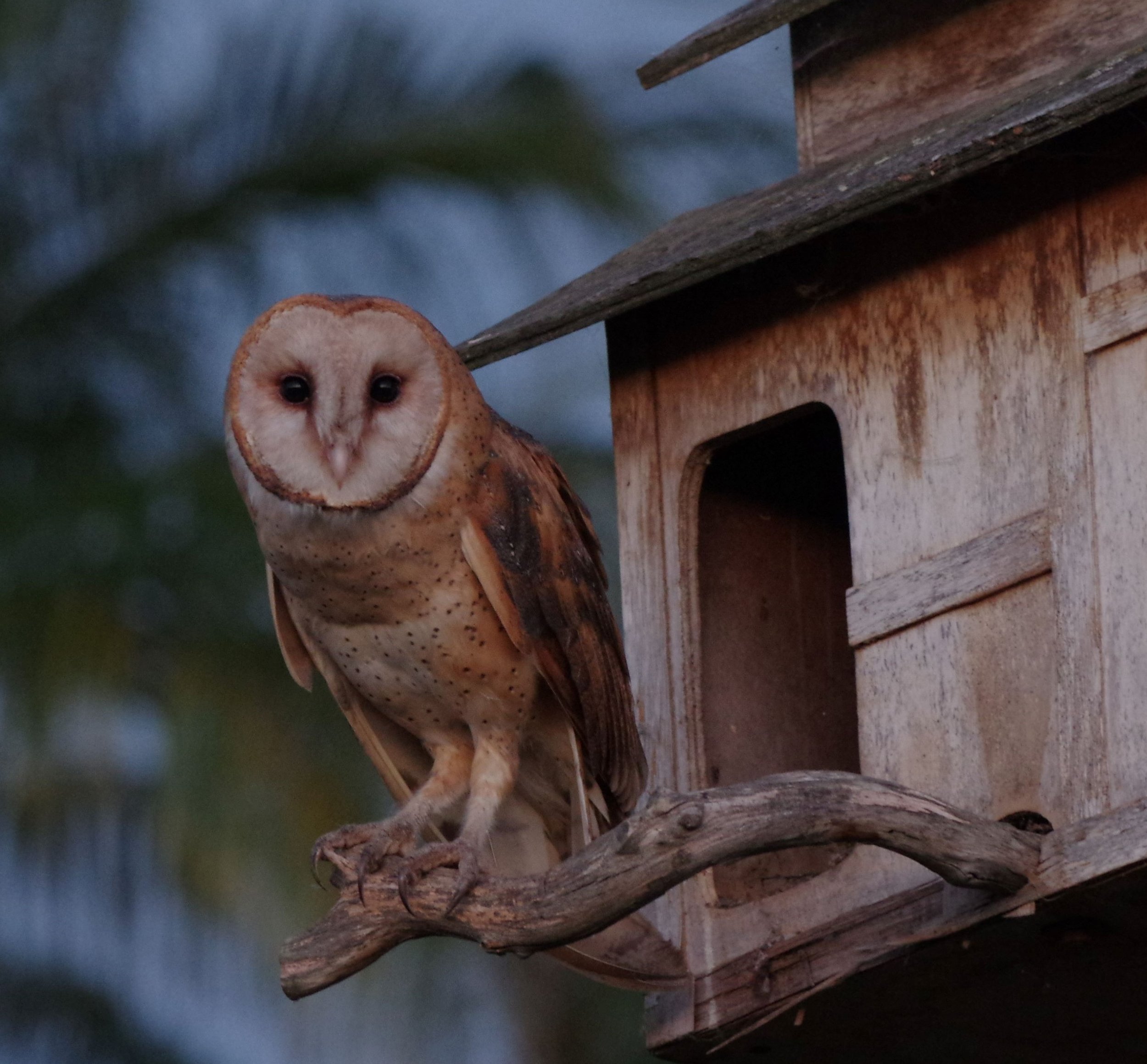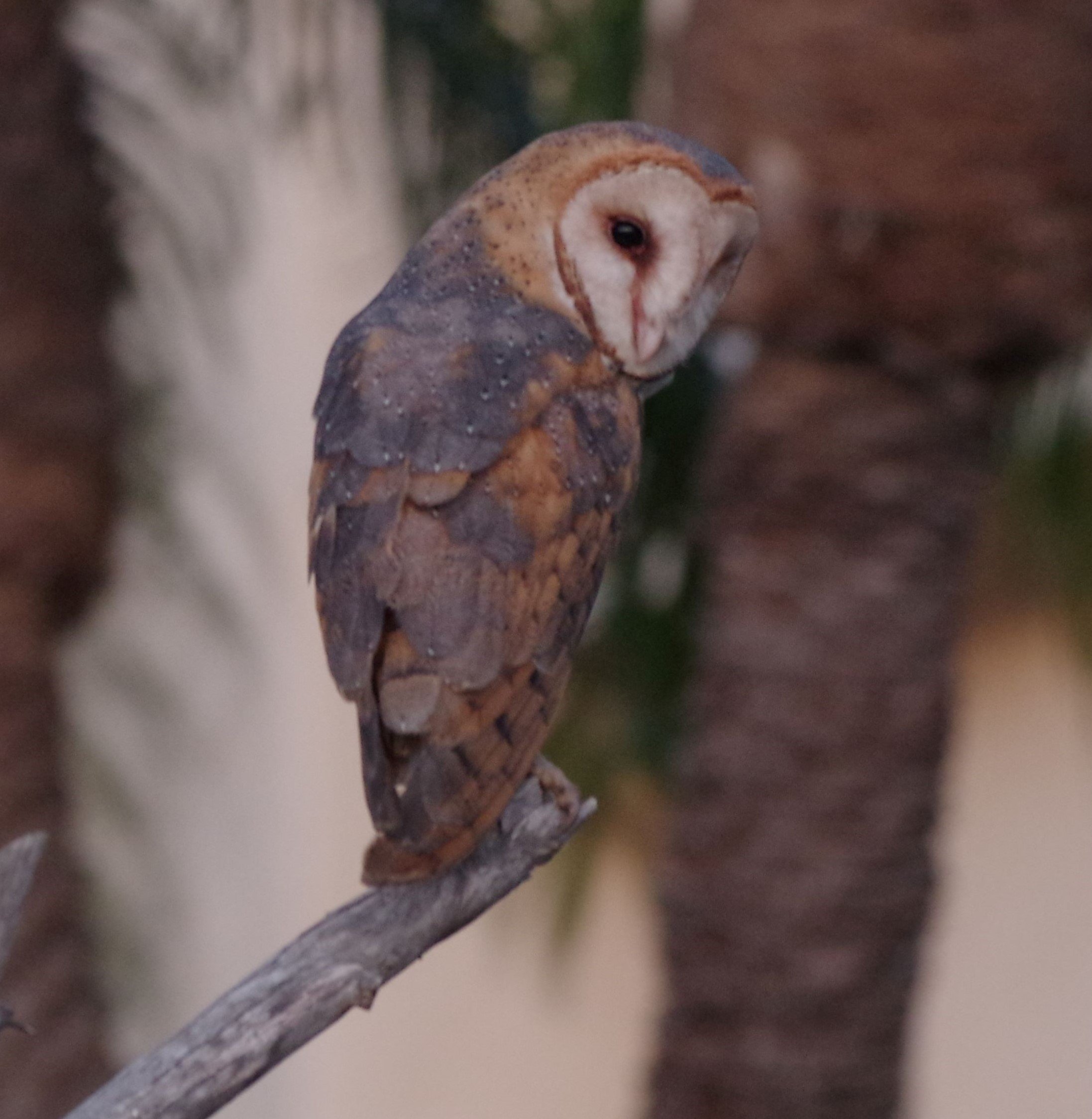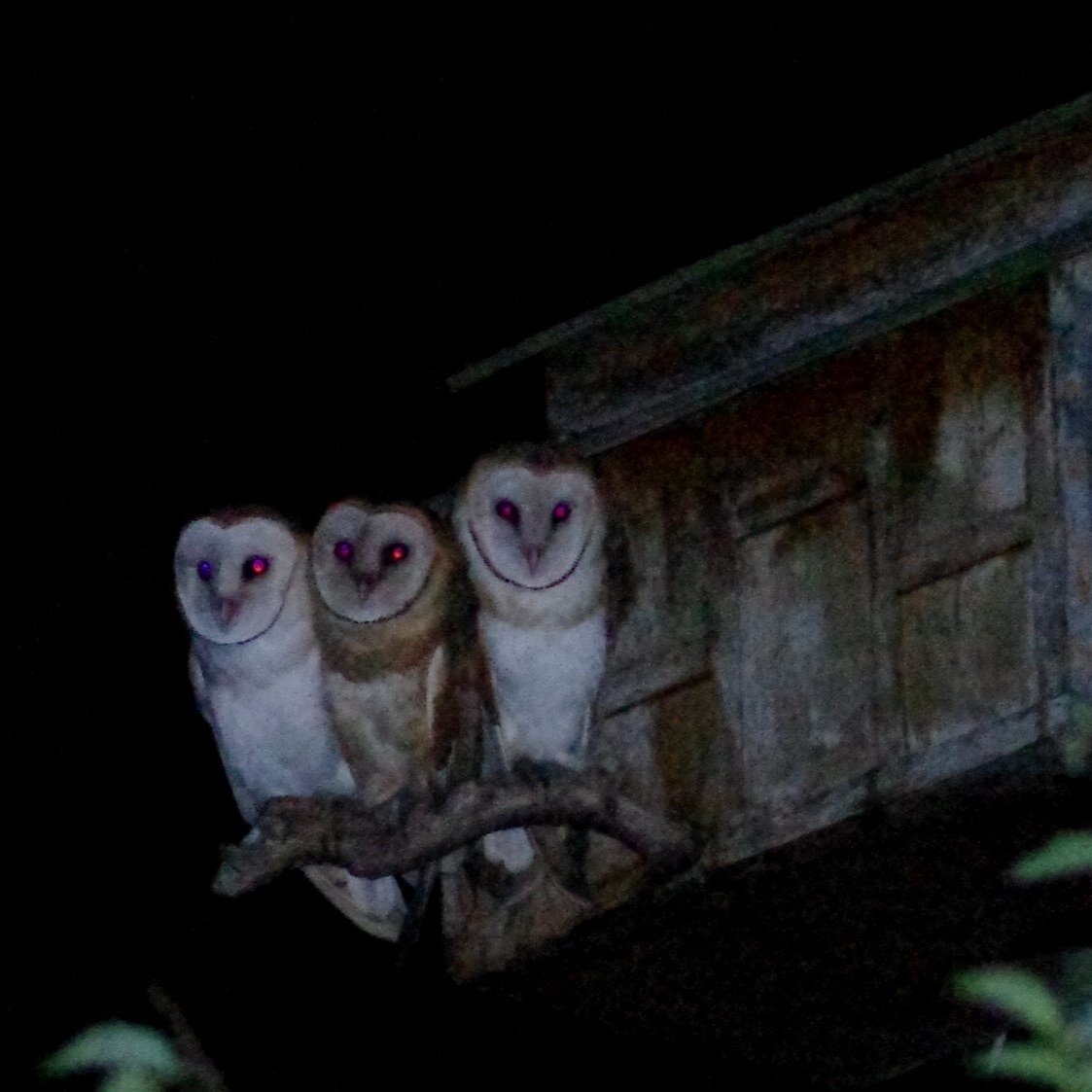My Life with the Barn Owls of Black Mountain
By Jeanie Anderson
Back in 2008, a San Diego Field Ornithologists meeting featured a talk on Barn Owls by Tom Stephan, falconer, and builder of owl boxes. I latched on to the concept of bringing barn owls to my backyard wildlife habitat to study their beauty, lifestyle and help with the rodent population in my orchard on Black Mountain. This was about the time that Molly and McGee - the San Marcos Barn Owl family - were getting live views from all over the world.
First, let’s learn about Barn Owls. They are the oldest lineage of owls and the word “Common” in front of the name Barn Owl connotes that they can be found throughout the world except for polar and desert regions, making them the most widely distributed species of owl. Per Wikipedia: The barn owl is the most widespread landbird species in the world, occurring on every continent except Antarctica.
The male has a white breast – a ghostly white when he’s flying overhead at night - while the female has a buff brown breast with little spots. Males are about 10% lighter than females, making them more agile for all the hunting they must do to provide for their family of owlets and mate.
Barn Owls have a distinctive heart-shaped facial disk which adds to their endearing beauty. It has an important purpose in funneling sounds to their ears – and – they can change the shape of their facial disk to focus on different distances. Magic powers indeed. More info here: https://en.wikipedia.org/wiki/Facial_disc
Barn Owls are nocturnal hunters. Their dietary preferences include rats, mice, baby bunnies and gophers. We owe them a debt of gratitude for all the prey they hunt and can help them thrive by ensuring we never ever use poison as bait for rodents.
Barn Owl feathers are very soft and feel like silk. They are designed with frayed edges to muffle sounds enabling their silent stealth flight at night.
Barn Owls are obligatory cavity nesters, preferably in trees or barns, prime real estate at a premium in our suburbs.
So along about 2008, I ordered a new barn owl box and started hosting my little Air B-O-B. The box was installed on a 16-foot pole up on my hillside with the entry door facing north to ensure that the sun did not hit the nest and cook the owlets. A nice manzanita branch perch, mounted on the box next to the doorway, acted as a landing for the owls, especially when the owlets fledged.
My new 2023 Barn Owl Box
My first guests did not arrive for a few years as it takes time for owls to scout the area. In the ensuing 15 years, I have hosted perhaps 10 families of barn owls, most recently in 2020, 2021, and 2023. It has been a joyful journey.
Let’s walk through a typical year for the Barn Owls of Black Mountain.
About October – November, the male seeks out a mate if he’s single. First, he scouts out the barn owl box and determines that it’s available. He may sit on the box in the evening, making a special call to advertise and/or fly around the area – using some special calls – hoping a female will reply. When they find each other, she follows him to check out the B-O-B accommodations. If she approves, they will move in and get to know each other, ultimately mating. My first family mated on top of the owl box at full moon!
The next phase after mating is egg laying and it begins in December or early January. With no substrate in the box, the female will lay about 4 to 6 eggs, one every other day. She sits on the first egg right away to begin incubation. This is her important role, keeping the eggs turned and warm. If all goes well, the little miracles will hatch in approximately 31-32 days, a few days apart.
The baby owlets are vocal right away with a “chittering” sound which later becomes a “snoring screech”. Over the years, this has been a constant springtime night sound in my habitat. The owlets screech in unison at times which I call “screech fest” not for the faint of heart. Mother owl is always with them, not leaving during the nesting season. She dutifully shreds their prey items into tidbit sizes. Soon, they can swallow them whole.
Owls sleep during the day. The female will be in the nest box and the male outside, typically in a palm tree under a frond. When he awakens at twilight, he flies home to greet his mate, making a call that is music to my ears. It sounds like “deet-deet-deet-deet” and lets her know he’s on his way. (phone home owl style). After a brief visit to the nest box – where I can tell you they are very affectionate – he departs for a night of hunting for furry delicacies for his family.
The owlets grow quickly but they cannot leave home until their important primary feathers are fully grown in, which can take months. They gaze out of their box, stretching their bodies and wings impatiently but knowing instinctively that they are not ready yet.
Fledging time is the most exciting time. It might start in early May or even July, depending on when they hatched. I prepare for this when I see little owlets peering out of the box like the Brady Bunch. My upstairs bedroom window becomes my “owl-servatory”. I remove the window screen, set up my tripod and SLR camera like when I do astro-imaging. Binoculars too!
Here is a nice sequence of a female barn owlet perched and then flying to a dead snag on the hillside. I have 2 dead trees which are wonderful places for the owlets to fly back and forth, strengthening their wings and flying ability. For about 2 weeks after they fledge, they come out of the box at dusk and practice flying, pouncing, and chasing each other. I affectionately call this time “romper-room” for owlets and would not miss this for anything!
Flash photos of the owlets don’t seem to bother them, albeit red eyes. The two male owlets are book-ending their sister in the middle. Pure joy!
In closing, I will share that hosting the B-O-B for barn owls anchors me to this place in a way I would never have dreamed of. I care about them and their survival - they are Family to me. When they leave, I have the same “happy-sad” empty nest syndrome as human families but with hope for the next season.
Two parting stories. One evening I was having dinner and heard a thud at the back patio door. A barn owlet had fledged and sort of crash landed. She was fine and eventually made her way back home. One morning, I opened the front door to go collect the mail. There right in front of my feet was a barn owlet! Special delivery! As owls do not fly during the day, I monitored him in the bush where he was hiding and then watched as he safely left after dusk.
Thank you for reading this and join me soon on a bird hike in Penasquitos Preserve. May the Owls be with You!
Resources: Two Owl Books I recommend:
WESLEY THE OWL, by Stacey O’ Brien The Remarkable Love Story of an Owl and His Girl
WHAT AN OWL KNOWS, by Jennifer Ackerman
https://www.amazon.com/What-Owl-Knows-Science-Enigmatic/dp/0593298888




